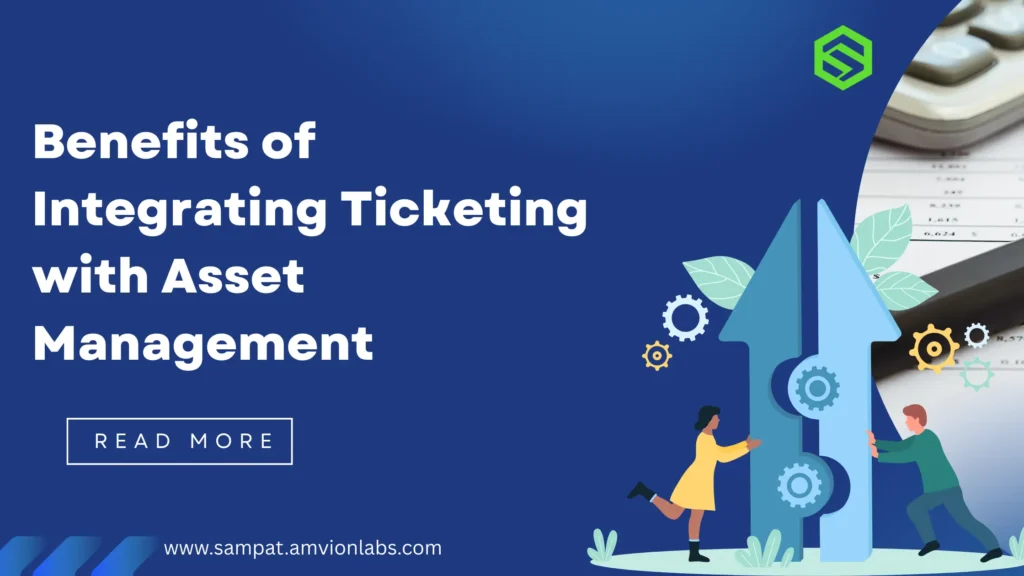
Organizations today depend heavily on their IT resources—whether that means computers, network hardware, or digital applications—to keep daily operations flowing. But when technical issues arise, it’s often the IT support team that gets called in to restore order.
This is where a ticketing system plays a crucial role by documenting and managing those issues. However, managing tickets separately from your IT asset data can create confusion, inefficiencies, and a lack of transparency. When these two systems—ticketing and asset management—are brought together, they form a cohesive solution that improves the way organizations manage both their infrastructure and service delivery.
Let’s explore how this integration delivers value across your entire IT ecosystem.
1. Clear Visibility of Issues by Asset
When support tickets are automatically linked to individual IT assets, it becomes much easier to track the full journey of both the issue and the equipment. Every repair, request, or update is stored in one place, providing valuable historical insights.
For instance, using SAMPAT’s Asset Management Software, you can instantly pull up a device’s full history—how many issues it has had, what’s been done, and who used it. This level of transparency improves problem-solving and decision-making.
2. Faster, More Informed Support
Integrated systems equip your support team with context right from the start. Instead of asking the user about device details, past issues, or installed software, technicians already have that information when the ticket is created.
This reduces the time spent gathering details and accelerates resolution. SAMPAT’s Ticket Management System enables this kind of efficient support by connecting tickets directly to assets with detailed context.
3. Intelligent Prioritization Based on Asset Criticality
Not all IT assets carry the same weight. A failure in a core application server should clearly be treated with more urgency than a desktop issue.
When ticketing is integrated with asset management, you can assign priority levels based on the asset’s importance. This ensures your support team responds to the most critical incidents first and helps maintain compliance with SLAs (Service Level Agreements) without manual intervention.
4. Smarter Asset Lifecycle Management
IT assets don’t remain static—they’re purchased, deployed, maintained, and eventually retired. Tickets generated for these assets tell an important story about their health and usage.
Integration allows you to see patterns over time. For example, if a device has frequent issues within its first year, it might be defective or poorly matched to its workload. By having tickets tied to lifecycle stages, you can better plan repairs, replacements, or upgrades.
5. Informed IT Budgeting and Procurement
Every ticket related to an asset is a data point that can inform future decisions. Which models break down more often? Are certain departments experiencing more hardware issues?
By analyzing the frequency and type of tickets across your asset base, you can make better procurement decisions—choosing equipment that lasts longer and performs better. This helps avoid overspending on unreliable or underused devices.
6. Move from Reactive to Proactive Maintenance
Most organizations fix problems after they occur—but what if you could address issues before they happen?
With an integrated system, recurring tickets related to the same asset can trigger maintenance alerts. You can also automate reminders for scheduled servicing, software patches, or license renewals. This proactive approach minimizes disruptions and extends asset lifespan, helping your teams stay ahead of problems.
7. Less Manual Work, Fewer Mistakes
Manually tracking asset data and matching it to tickets takes time and can lead to errors. It’s easy to mislabel a ticket or forget to update an asset record, especially when switching between systems.
By integrating the two, ticket creation and asset tracking happen in sync—reducing duplicate efforts, saving time, and ensuring your records are always up to date.
8. Audit-Friendly and Security-Aligned
In industries with strict compliance requirements, having a clear log of all asset-related activity is vital. Whether it’s for internal reviews or external audits, your organization needs to demonstrate who accessed or modified which asset—and when.
An integrated system automatically documents these actions via the ticketing process, making it easier to stay compliant with standards like ISO/IEC 20000. It also adds a layer of accountability to your IT operations.
9. Smooth Onboarding and Exit Processes
When a new employee joins the company, they’re assigned a set of IT assets. Similarly, when someone leaves, the company must ensure those assets are returned and properly reset or retired.
With integration in place, asset assignment and recovery can be tracked through tickets. You know exactly who received what, when it was assigned, and when it’s due for return. This helps avoid asset loss and ensures a clean handover process.
10. Better Insights Through Reports
Data becomes more useful when it’s connected. By combining ticket and asset data, you can generate meaningful reports that reveal insights like:
- Which assets frequently require support
- Which departments report the most issues
- Average resolution time by asset type
These insights support continuous improvement, giving IT managers the tools they need to refine operations and plan future investments.
Final Thoughts:
While ticketing and asset management systems each serve their own purpose, bringing them together creates a single, intelligent workflow. It eliminates guesswork, reduces delays, and provides better visibility across your organization’s tech landscape.
If you’re currently managing these systems separately, you might be missing out on efficiency, data clarity, and actionable insights. SAMPAT’s Ticket Management System and Asset Management Software are designed to work together—giving you a unified platform to simplify IT service management, improve user experience, and keep your assets in check.



